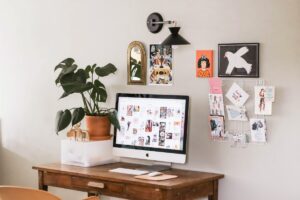
When you think of being an intern you think of it as a non-paid job, you don’t have much fun, and it’s only for the summer. Starting the internship was a different experience than I had anticipated, and I learned more than I was expecting. I believe that during my time as an intern, I learned many new skills, worked efficiently, and improved my communication skills. I became more conscious of my mistakes as a designer and gained an understanding of the real world. I learned more about emailing customers, scheduling meetings, and maintaining proper internship etiquette. Learning many jobs and expectations is not what I expected from an internship.
One of my mistakes was failing to create more than one draft of a client’s project. I’d only send one concept at a time. It’s a good idea to create at least three to five sketches and digital drafts to provide the client with a few options. Another skill that I lacked was the ability to complete a design using only one program. If I was making a poster, I would always use Photoshop, but I learned from my coworkers that they used Indesign, and it’s easier to generate numerous copies on Indesign to make little modifications. Expanding your knowledge of new programs will help you and your customer produce greater results.
Because I was juggling school, my job, and this internship, my time management skills became beneficial. I’ve worked two jobs at the same time before while in school, so I knew what I was heading into and approached it cautiously. It takes me around two weeks to properly understand the school content and how things work. Dealing with the many deadlines for my schooling and client job made it difficult. Having my planner helped me keep organized and on top of my game; without it, I would not know how to balance my job and get it done well.
My internship and this internship course have helped me enhance my time management and knowledge of using new programs, internship etiquette, communication, and being okay with mistakes as a designer. Going forward and looking for new jobs I will keep in mind the tips I learned from the internship and the internship course on how to succeed in an interview, having an organized portfolio, office, and Zoom etiquette, and keeping up the communication skills to better ensure your growth as a designer.











